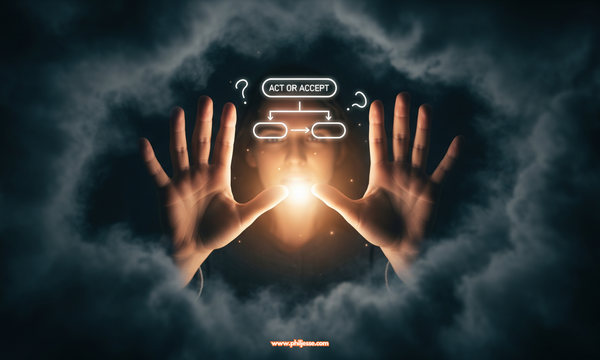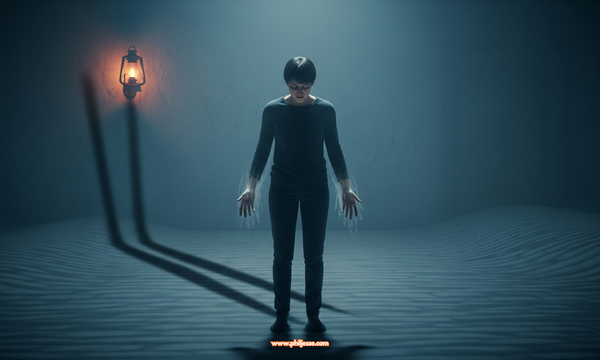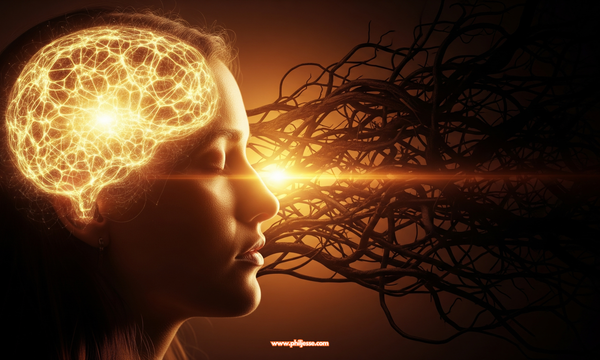The Stillness Before the Start: A Practical Guide to Morning Meditation
In a world that never stops, how you start your day matters more than ever. This is a practical guide to demystifying meditation, exploring its ancient roots, and embracing a simple morning practice to find calm, focus, and cultivate a more resilient and focused mind.
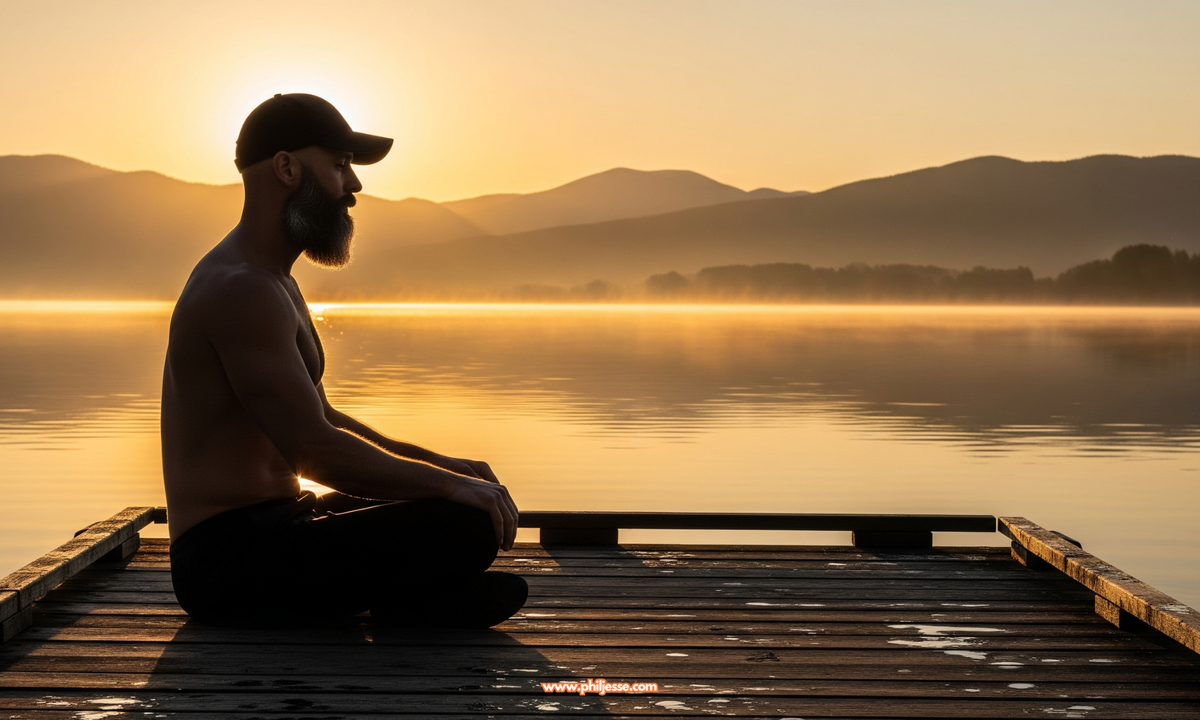
The alarm blares. Before your eyes are fully open, the mental to-do list begins its relentless scroll. Emails to answer, meetings to prepare for, deadlines looming, the subtle hum of anxiety for the day ahead already tuning up in the background. For many of us, this is the default start to the day: a reactive lurch into a world that is already demanding our attention. We grab our phones, and the race begins.
But what if you could choose a different start? What if, before the noise of the world rushes in, you could connect with a place of profound stillness within yourself?
My name is Phil Jessé. Many people know me as an endurance athlete who has completed over half a million pull-ups, or as a mindset and performance coach. They see the intense physical effort, the relentless drive. What they don’t always see is the foundation upon which that performance is built: the quiet, solitary practice of meditation. It is in these moments of stillness that I forge the focus, resilience, and inner calm required to navigate not only audacious physical challenges but the complexities of modern life itself.
Meditation is a word that carries a lot of baggage. For some, it conjures images of silent monks in remote monasteries. For others, it’s dismissed as a vague, spiritual trend with no practical application. I want to offer you a different perspective. This article is an invitation to demystify meditation, to see it not as an esoteric ritual, but as a practical, powerful, and universal tool for training the mind. It’s a guide to understanding why this ancient practice is more relevant than ever and how you can use it to consciously and powerfully shape the most important part of your day: the very beginning.
What is Meditation (Really)?
Let’s start by clearing the air. Meditation is not about emptying your mind. If you’ve ever tried to sit and “think about nothing,” you’ll know it’s a near-impossible task. The mind’s nature is to think. Meditation is not about stopping your thoughts; it’s about changing your relationship to them.
At its core, meditation is the practice of training your attention and awareness. It’s about learning to observe your thoughts, feelings, and bodily sensations without judgment and without getting swept away by them. It’s the mental equivalent of stepping onto a riverbank and watching the water flow by, rather than being caught in the current.
Crucially, as I often say in my guided practices, there is no right or wrong way to meditate. The goal isn’t to achieve a perfect state of blissful silence. The goal is simply to show up, to practice bringing your attention back, again and again, whenever it wanders. The “work” of meditation is in that gentle, persistent act of returning. It’s a practice in patience and self-compassion, not a performance to be judged.
A Timeless Practice for a Modern World
While meditation has seen a surge in popularity in the West, it is anything but a new phenomenon. Its roots run deep into the soil of human history, a testament to its enduring power. The earliest written records that describe meditation techniques are found in the Vedas, the ancient scriptures of Hinduism in India, dating back to around 1500 BCE. It was a practice woven into the fabric of spiritual life, a method for understanding the nature of the self and the universe.
From these ancient origins, the practice evolved and spread, becoming a central pillar of many Eastern traditions, most notably Buddhism. The Buddha, Siddhartha Gautama, who lived around the 5th century BCE, taught meditation not as a religious rite, but as a direct path to alleviating suffering and achieving enlightenment through mindfulness and insight.
To acknowledge these deep historical roots is not to claim meditation as exclusively religious. It is to recognise that for millennia, humans have understood a fundamental truth: our inner world can be trained. The techniques developed and refined in these ancient cultures are, in essence, a universal technology of the mind. Today, stripped of dogma and examined through the lens of modern neuroscience, we can appreciate meditation for what it is: a powerful, secular tool for managing stress, improving focus, and cultivating emotional wellbeing in our complex, modern lives.
My Arena of Stillness: From Pull-Up Bars to Presence
My own journey with meditation is deeply intertwined with my physical practice. To perform hundreds of pull-ups in a single session requires more than just muscle; it demands a state of profound mental focus, a deep and unshakable mind-body connection. As the reps mount and fatigue sets in, the physical challenge recedes, and a mental arena opens up. In that space, there is only the rhythm of my breath, the feeling of the bar in my hands, and the singular focus of the next repetition. It is an exhilarating, sometimes euphoric state of flow. It is, in its own way, a meditation in motion.
This experience taught me a powerful lesson. Unlike my pull-up training, which requires a specific piece of equipment, the arena of the mind is always accessible. Meditation is the ultimate portable practice. I can do it anywhere, anytime. Living in a busy city, finding true silence is a challenge, but with modern tools like noise-cancelling headphones, I can create a bubble of solitude and turn a city bench or a quiet corner of a coffee shop into a space for practice.
As someone who navigates the world with ADHD and autism, my mind can often feel like a browser with a hundred tabs open. Meditation has been the most effective tool I’ve found for gently closing those tabs, for quieting the internal noise, and for finding a sense of calm and presence. It’s a sustainable practice that helps me better connect with myself, which in turn allows me to show up and connect more genuinely and effectively with others.
Kai and the Still Mountain
The journey of learning to meditate is a personal one, a story that unfolds within. To offer a different perspective on this path, beyond the practical steps, I want to share a simple narrative that captures the essence of finding your own inner calm. This is "Kai and the Still Mountain."

Kai’s mind was a whirlwind. Thoughts of yesterday and worries for tomorrow swirled like a constant storm of leaves, leaving no room for peace. The world felt loud, and Kai felt lost within its noise, always rushing but never arriving.
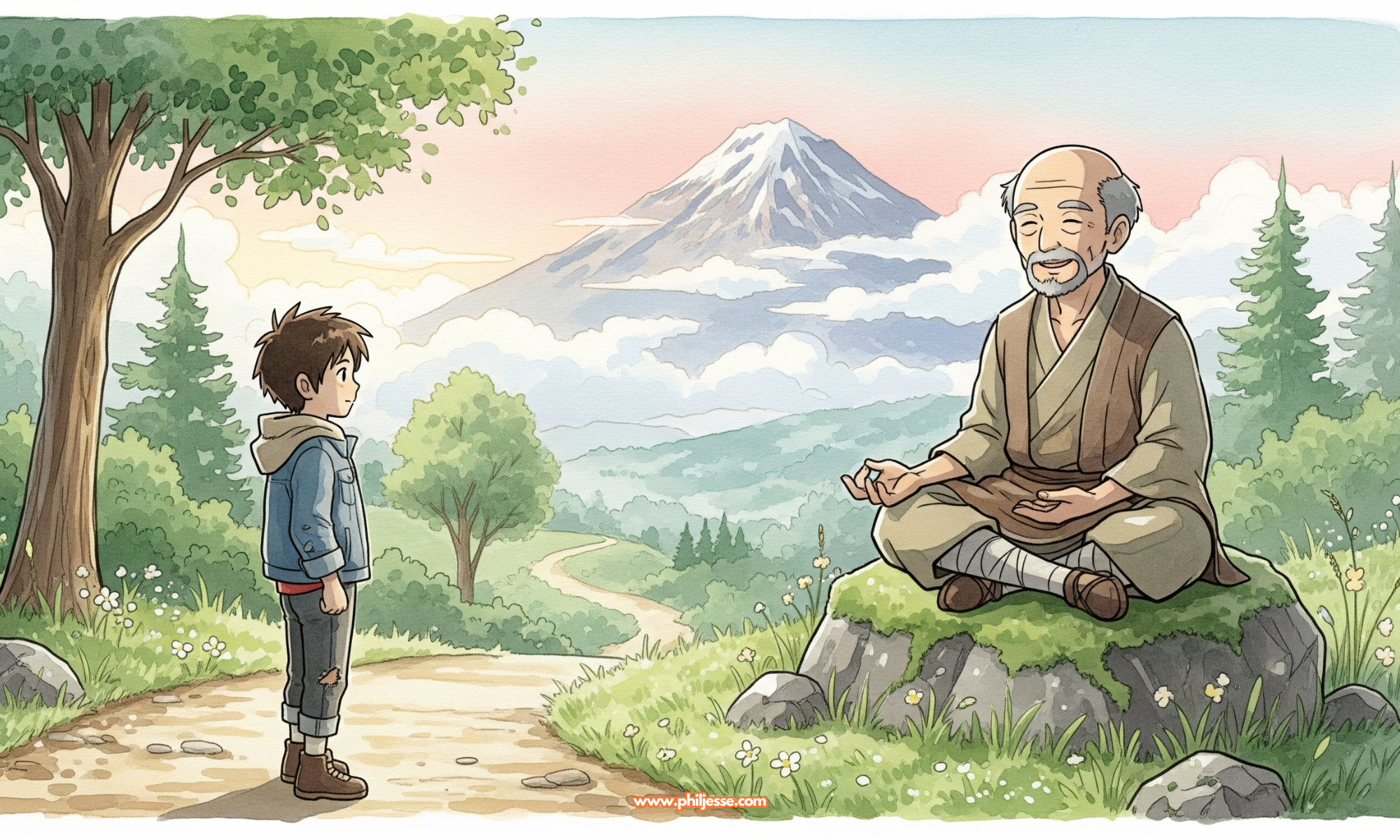
One morning, seeking quiet, Kai followed a forgotten path that led away from the city. The path climbed gently, and soon the noise faded, replaced by the whisper of the wind. At the path's end sat a still, old man with a kind face, a bald head, and a gentle grey beard, gazing at the mountain peak ahead. He didn't speak, but simply patted the ground beside him.
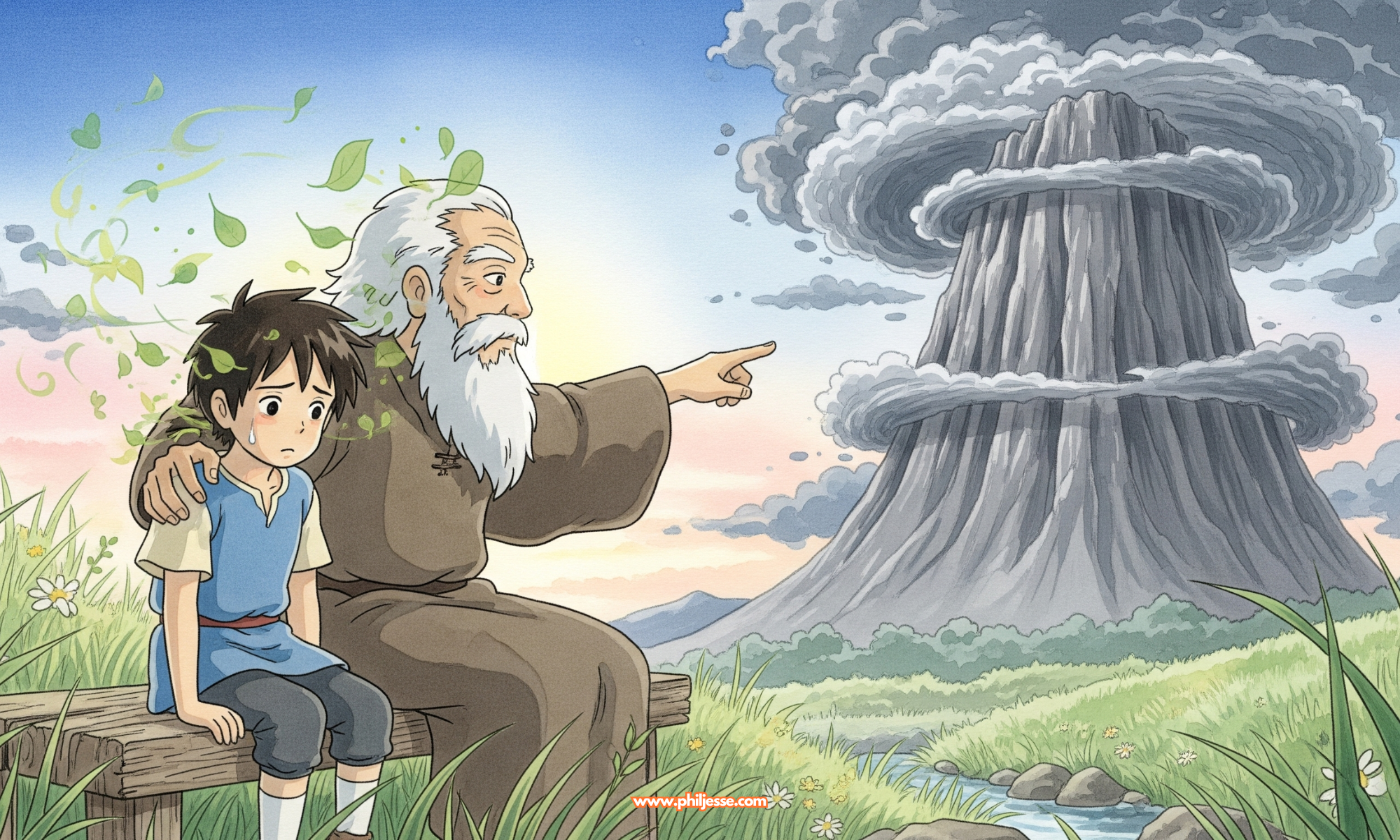
Kai sat. The whirlwind of thoughts followed, still loud in the quiet air. A passer-by, noticing Kai’s restlessness, simply pointed towards the great mountain. "The weather changes," he said, his voice as calm as the air. "The mountain remains. Your thoughts are the weather. They are not the mountain."
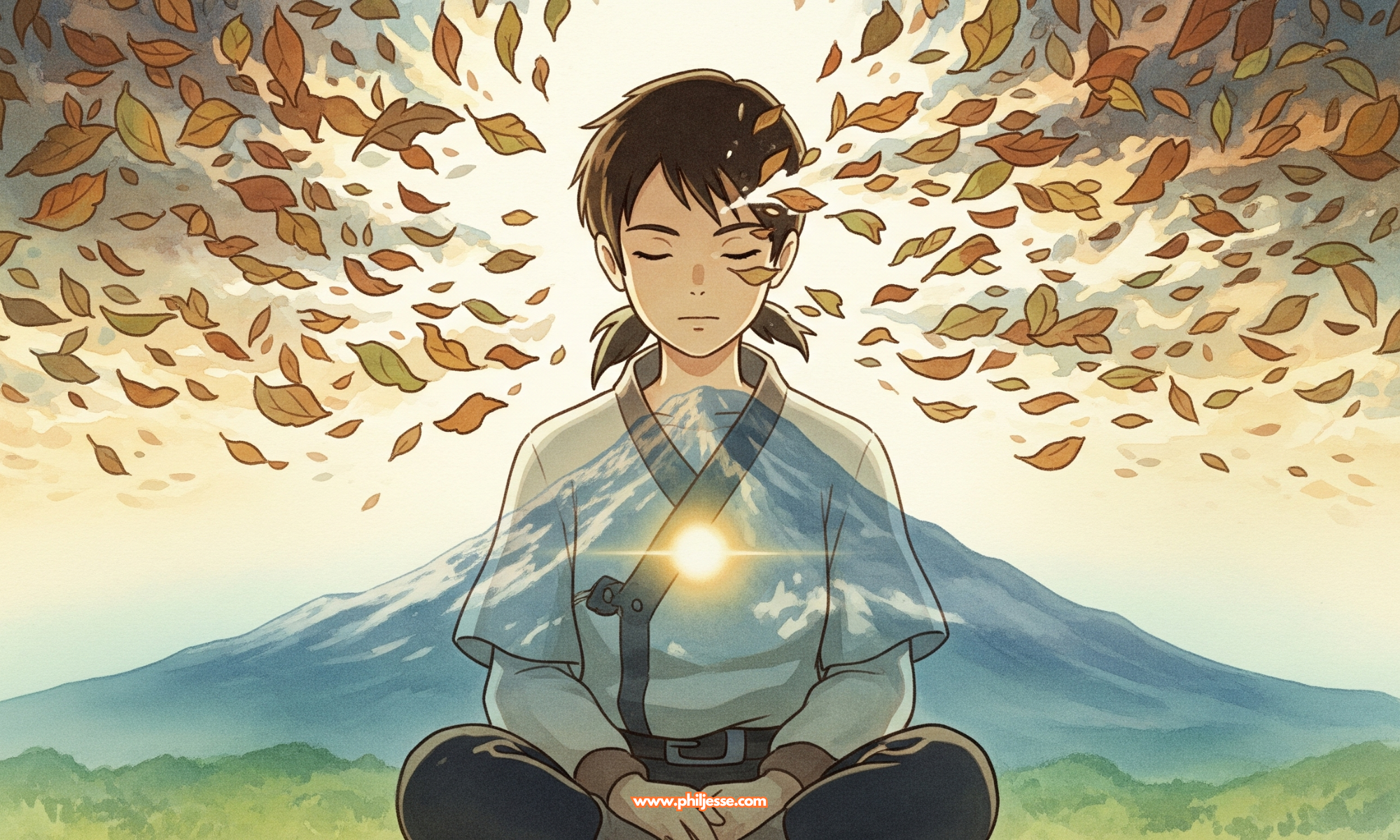
Kai looked at the mountain, truly looked, for the first time. It stood in quiet dignity, strong and present. Kai closed their eyes and took a breath, and in that breath, for the first time, felt a space between the swirling leaves. In that space was a stillness. A strength. Kai felt the mountain within.

The sun rose higher, bathing the peak in golden light. Kai opened their eyes, the storm within now quiet. The world was still there, but the noise was different. It was just sound, passing by. The old man smiled, a knowing, gentle smile. Kai smiled back. Today was a new day. Today was Day 1.
The Power of a "Day 1" Mindset: How You Start Your Day Matters
A core principle of The Bar Raiser Mindset is the idea that "Every Day is Day 1." It’s the understanding that no matter what happened yesterday – the challenges, the successes, the missteps – today is a fresh start. It is a new opportunity to learn, to grow, and to step into your power with intention.
There is no practice that embodies this principle more perfectly than morning meditation.
When you begin your day with meditation, you are making a conscious choice. Instead of immediately reacting to the external world – the emails, the news, the demands of others – you are choosing to first connect with your internal world. You are creating a deliberate pause, a space to ground yourself before the day begins. This simple act shifts your entire orientation from reactive to proactive. You are no longer just a passenger being carried along by the day’s events; you are the calm and focused driver, setting your own course.
Your First Step: A Guided Morning Reset
Understanding the benefits of meditation is one thing; experiencing them is another. For many, the idea of sitting in silence can feel daunting. This is where guided meditation becomes an invaluable tool. It provides a structure, a gentle voice to anchor your attention, and a clear path to follow.
To help you experience this directly, I’ve created a guided morning meditation specifically designed around the "Day 1" principle. It’s a 13-minute practice to help you release what’s past, connect with your inner strength, and set a powerful, positive intention for the day ahead. It’s a practical first step into the world of morning meditation.
(13-Min) The "Day 1" Morning Meditation (A Guided Reset for Positive Energy)
A Simple Guide to Starting Your Own Practice
While guided meditations are a wonderful resource, the goal is to cultivate a practice that you can do on your own, anytime you need it. Here are a few simple steps to begin:
- 1️⃣ Find Your Time & Space: It doesn’t need to be an hour at dawn in a perfectly silent room. Start with just five minutes. Find a comfortable spot where you can be relatively undisturbed. As I’ve found, a good pair of headphones can turn almost any space into a sanctuary.
- 2️⃣ Get Comfortable: Sit in a way that feels both relaxed and alert. This could be in a chair with your feet on the floor or cross-legged on a cushion. The key is a straight spine that allows for easy breathing, without being rigid.
- 3️⃣ Choose an Anchor: Your anchor is simply a point of focus to which you can return your attention. The most common and accessible anchor is your breath. Simply notice the sensation of the air entering and leaving your body. You might focus on the feeling at the tip of your nose or the gentle rise and fall of your abdomen.
- 4️⃣ Embrace Your Wandering Mind: Your mind will wander. This is not a sign of failure; it is simply what minds do. When you notice your attention has drifted to a thought, a sound, or a sensation, gently and without judgment, acknowledge where it went, and then guide it back to your anchor. This act of returning, over and over, is the practice.
The Stillness is the Start
The journey of meditation is a personal one. It is a quiet, solo practice of self-discovery. It’s a way to build a relationship with your own mind, to understand its patterns, and to learn how to guide it with kindness and intention.
In a world that prizes action, speed, and external achievement, choosing to start your day with a few moments of deliberate stillness can feel like a radical act. But it is in this stillness that you find your true starting block. It is here that you gather your energy, clarify your focus, and connect with the calm, resilient, and powerful person you are, before you step out to meet the day. This is your Day 1. Embrace it.
The principles discussed are not a substitute for professional advice. Individual results from applying these concepts will vary, as your unique path, choices, and consistent efforts play the most significant role in your experiences. If you require guidance regarding specific personal, financial, medical, or mental health situations, please consult with a qualified professional. Please engage with these ideas responsibly, understanding that you are the architect of your choices and actions.


